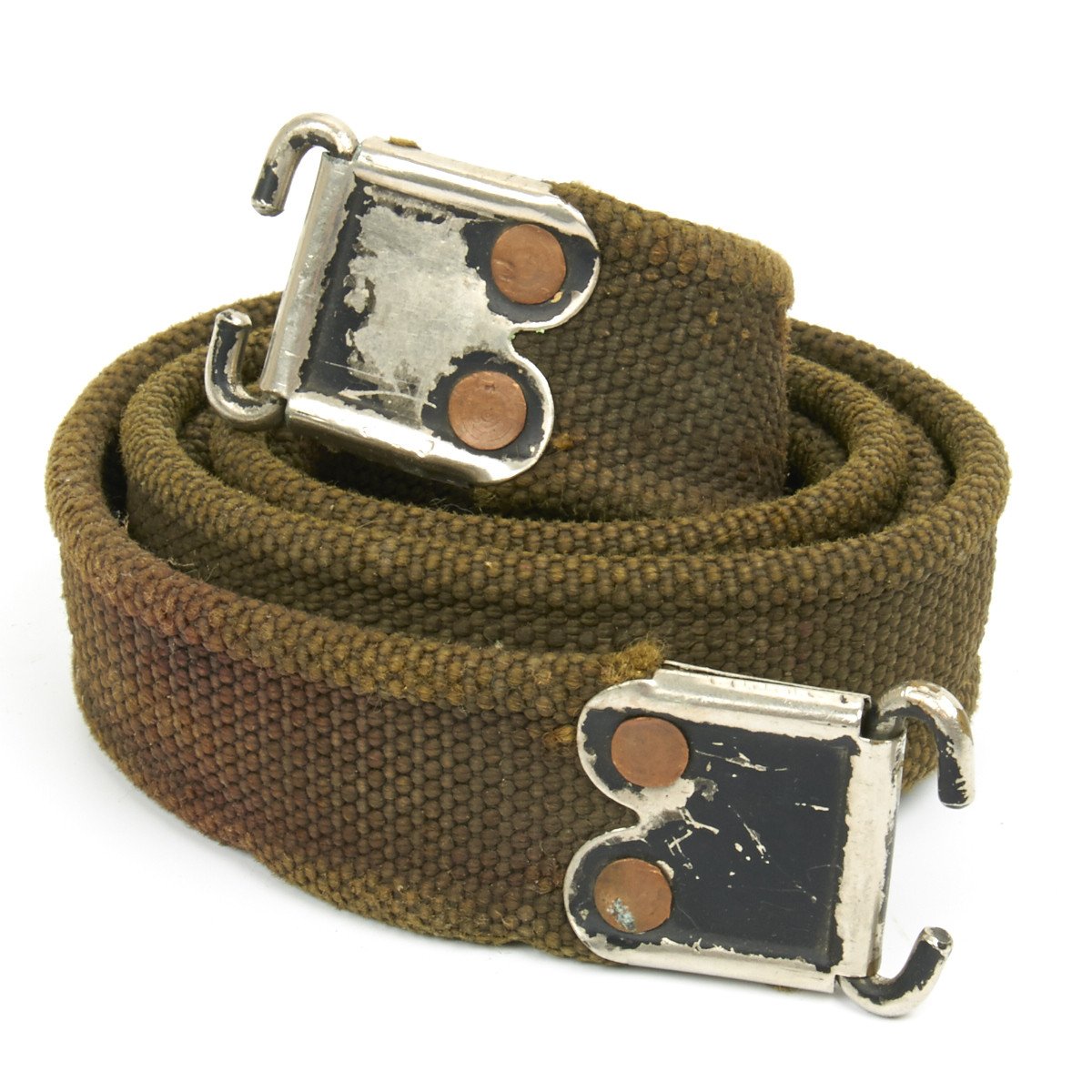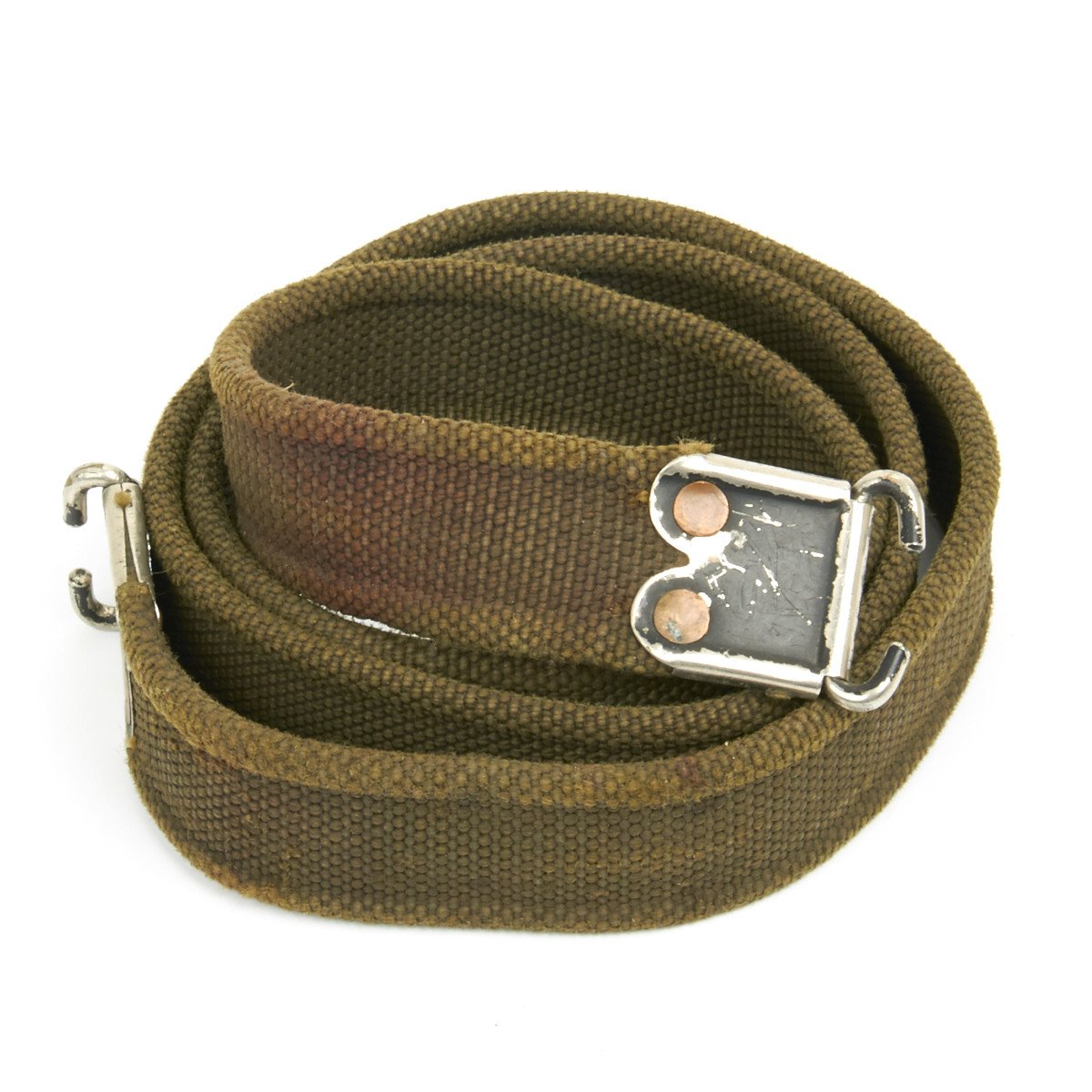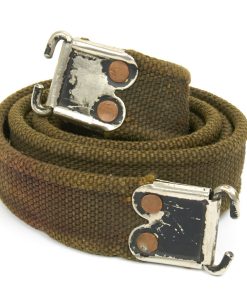Original British L1A1 FAL Rifle Green Nylon Rifle Sling Original Items
$ 14,95 $ 8,97
Original Item: Dating from the 1960s-1990s these are the rot resistant nylon woven rifle slings introduced for use in the Malaysian Jungle and other exotic tropical (wet & humid) parts of the former British Empire.
Most commonly seen on F.A.L Rifles these were put into service with many varieties of small arms as they proved to be highly reliable under difficult fighting conditions. Each is comprised of Olive drab woven nylon yarn and metal ends (ends are almost identical to those used in WW2) interchangeable with dozens of historic weapons, modern weapons and assault rifles.
Approximate measurements: 43″ x 1.25″
Offered in good solid condition.
The L1A1 Self-Loading Rifle, also known as the SLR, by the Canadian Army designation C1A1 (C1) or in the USA as the “inch pattern” FAL,[nb 1] is a British Commonwealth derivative of the Belgian FN FAL battle rifle, produced under licence. It has seen use in the armies of Australia, Canada, India, Jamaica, Malaysia, New Zealand, Rhodesia, and the United Kingdom.
The original FAL was designed in Belgium using metric dimensions while the components of the “inch-pattern” FALs are manufactured to a slightly modified design using British imperial units. Many sub-assemblies are interchangeable between the two types, while components of those sub-assemblies may not be compatible. Notable incompatibilities include the magazines and the butt-stock which attaches in different ways.
Most Commonwealth pattern FALs are semi-automatic only. A variant named L2A1/C2A1 (C2), meant to serve as a light machine gun in a support role, is also capable of automatic fire. Differences from the L1A1/C1 include a heavy barrel, squared front sight (versus the “V” on the semi-automatic models), a handguard that doubles as a foldable bipod, and a larger 30-round magazine although it could also use the normal 20-round magazines as well. Only Australia and Canada used this variant, as the UK and New Zealand used Bren light machine guns converted to fire the 7.62mm NATO cartridge. Some Canadian C1s issued to naval personnel were also capable of automatic fire.
| Hand Select | No, Yes |
|---|
Fast Shipping with Professional Packaging
Thanks to our longstanding association with UPS FedEx DHL, and other major international carriers, we are able to provide a range of shipping options. Our warehouse staff is expertly trained and will wrap your products according to our exact and precise specifications. Prior to shipping, your goods will be thoroughly examined and securely secured. We ship to thousands clients each day across multiple countries. This shows how we're dedicated to be the largest retailer on the internet. Warehouses and distribution centres can be located throughout Europe as well as the USA.
Note: Orders with more than one item will be assigned a processing date depending on the item.
Before shipping before shipping, we'll conduct a thorough inspection of the items you have ordered. Today, the majority of orders will be delivered within 48 hours. The delivery time will be between 3-7 days.
Returns
The stock is dynamic and we cannot completely manage it because multiple stakeholders are involved, including our factory and warehouse. So the actual stock may alter at any time. It's possible that you may not receive your order once the order has been made.
Our policy is valid for a period of 30 days. If you don't receive the product within 30 days, we are not able to issue a refund or an exchange.
You can only return an item if it is unused and in the same state as the day you received it. You must have the item in its original packaging.
Related products
Uncategorized
Uncategorized
Angolan Rebel 1970s era 60mm Inert Display Mortar from Angolan Civil War Original Items
Uncategorized
Uncategorized
Band of Brothers ORIGINAL GERMAN WWII Le. F.H. 18 10.5cm ARTILLERY PIECE Original Items
Uncategorized
Uncategorized
Armored Burgonet Helmet & Polearm from Scottish Castle Leith Hall Circa 1700 Original Items
Uncategorized
Uncategorized
Uncategorized
Armoured Fighting Vehicles of the World: AFVs of World War One (Hardcover Book) New Made Items
Uncategorized
Uncategorized
Uncategorized
Uncategorized
Uncategorized
Uncategorized






































































